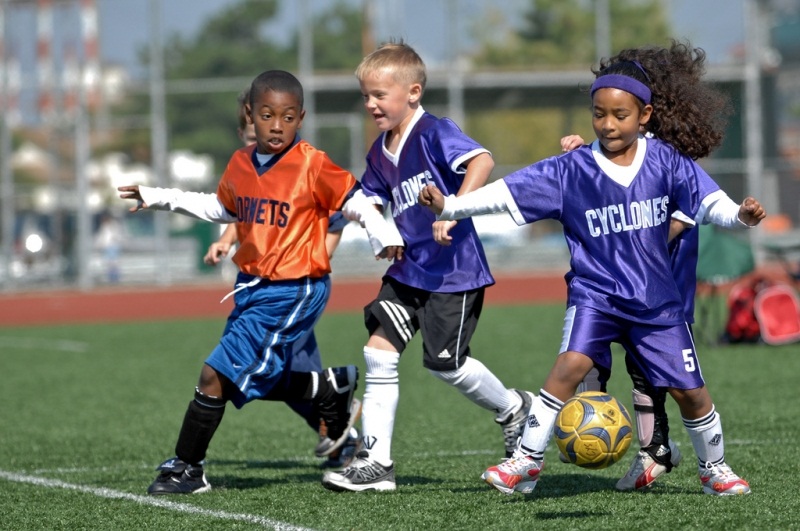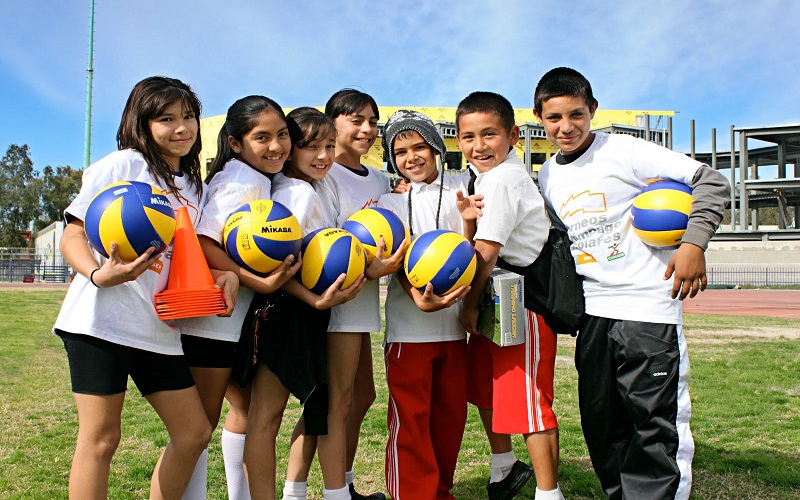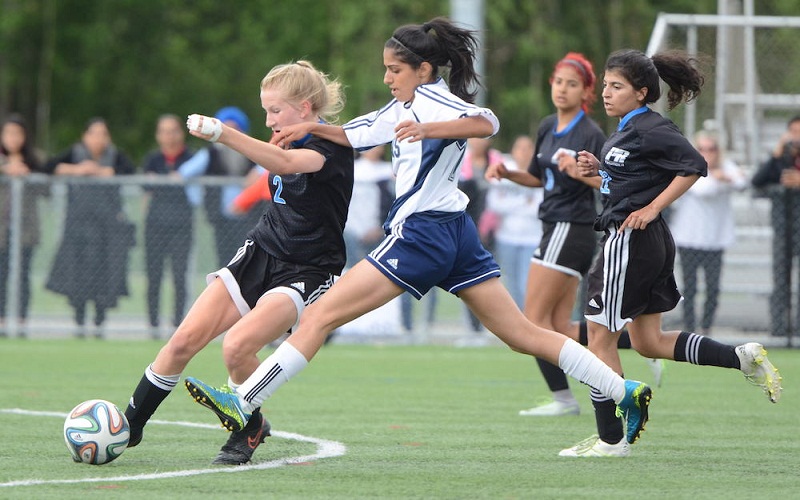
Great benefits of school sports- High five! School spirit Pride of the team. Sports programs at school can show positive reactions and behaviors in adolescents. But, what are the benefits of these programs? What do we lose when schools are forced to cut these programs? The most extensive research has been shared in a report called “Relationships between sport participation with youth and selected behaviors with health risk from 1999 to 2007”, published in the school’s health navigation journal. This report discusses many different factors, including race, age, gender, and behaviors such as eating habits, sexual activity, and drug risks. The report found that many groups experienced the overall benefits, with the exception of some subgroups.
- Weight control
- Ability to solve problems
- Self esteem
- Social competence
- Academic achievements
And sports can lead to reduced rates of:
- Juvenile arrests
- Teen pregnancies
- Leaving school
In addition to these social and emotional benefits, sports can also bring intangible benefits to schools and communities. “Sports also create important opportunities for students to contribute to the school community, which can increase commitment or identification with school values.” This article will examine some of these benefits more closely and explain how school administrators can factor these in their decisions regarding school sports programs.
What is school sports?
School Sports is defined as all those recreational, motor and sports activities, through educational and pedagogical processes that strengthen the comprehensive education of girls, boys, adolescents and young people of school age, as a complement to educational development, which are implemented after school for satisfy their needs and interests by promoting the culture of sports practice and use of free time.
The school sport is the one that is carried out within each Educational Establishment and responds to certain guidelines that define and identify it, with respect to the other alternatives that can be offered for sports practice, be it the physical education class, sports associations , federations, private clubs, etc. The above, is not presented as a contradiction or a disagreement, the school sport can be cause or effect of the quality of this, that is, the other environments where it can develop will be favored in terms of quantity and quality, depending on the alternatives of school sport that is offered within the heart of each school institution.
School sports refers, first and in a restricted sense, to the type of sport and physical activity that takes place within the local framework of the school. Secondly and in a broad sense, to all kinds of physical activity that takes place during the school period outside of the compulsory physical education classes and as a complement to them: This category includes a whole series of activities that do not cover a compulsory character and that usually mean a leisure time education.
Benefits of health school sports
The clearer benefits of school sports programs can be seen in the physical health of adolescents. During the past 20 years, many studies have studied the correlation between increasing obesity rates and decreasing funding for physical education in high schools, whether in a gym class or extracurricular sports activities. Young people generally participate in fewer physical activities as they get older, but if they remain involved in sports programs, they are more likely to reap the physical benefits that would otherwise be lost. This certainly helps alleviate one of the factors that can lead to obesity.
Not only physical activity helps the prevention of obesity, but the activity can lead to better eating habits. Young people who participate in physical activity generally consume more fruits and vegetables, are less likely to be overweight and are more likely to become physically active adults. A good habit can lead to many more, so helping young people to remain physically active is imperative for their overall health.
Social benefits
Teenagers tend to see the greatest social benefits when competing in team sports. Physical activity combined with camaraderie and purpose lead to a winning combination. “Girls who compete in sports get better grades, graduate at higher rates and have more confidence. The vast majority avoids unplanned pregnancies, drugs, obesity, depression and suicide. ” The Taliaferro study marked a series of positive social benefits of physical activity, including less risky sexual behaviors (increased condom use and fewer sexual partners) and less tendency to smoke cigarettes, use marijuana, or take other illegal drugs. These behaviors varied between racial groups and gender. Social benefits can also lead to academic success. It shows that physical activity leads to better academic performance and when your team performs more, on the court and in the classroom, it adds an incentive for individual players to perform in a better way. Participating in a team or as an individual can also help young people improve problem-solving skills, which leads to better academic performance.
Emotional Benefits
Another study in the General Journal of the School of Health, entitled “Physical Activity Behaviors and Perception of Life Satisfaction among Public High School Adolescents,” examined high school students in South Carolina and how physical activity is linked to his general satisfaction with life. The study took into account the 20-minute exercise, exercise in gym class, playing on a sports team at school, stretching and other factors. In general, the study found benefits of school sports in all groups, especially Caucasian women. “It seems reasonable to suggest that for Caucasian women, playing on a sports team, especially one at school, seems to be something that protects them. Playing on sports teams can improve the school connection, Social support and the link between friends and teammates for Caucasian women, may also have a higher value compared to regular exercise. For men (Caucasian and African American) it seems that regular exercise, stretching exercises, exercise in physical education class and performance in a sports team at school are protective to improve the quality of life. For Caucasian men, building resistance, stretching and strength training can be more important mentally and physically for competitive sports in school and for mental health in general. It is not only adolescents who reap social, physical and emotional benefits of exercise. Usually, It is shown that physical activity has numerous benefits for adolescent participants. “A growing literature group suggests a relationship between physical activity and improving the mental well-being of adolescents. Participation in exercise for adolescents was associated with a decrease in anxiety, depression and better academic performance; Better parental relationships, increased self-esteem and decreased anger; Decrease in psychological stress; Lower levels of mental health problems; Reduction of tobacco, alcohol and marijuana use; And satisfaction with obligatory classes of gymnastics in the school “. Taken in another way, lack of exercise, at school or otherwise, can lead to depression, anxiety and less interest in school. Unfortunately, Physical activity decreases over time in a young person at school. “Participation in vigorous physical activities for at least 20 minutes and 3 days a week decreases from 69% among adolescents from 12 to 13 years to 38% among those from 18 to 21 years.” This could be due to a number of factors throughout the life of a young person, but parents and teachers should continue to encourage young people to stay active to increase their quality of life.
Understanding the Panorama
How can schools use this information in a better way? With budget cuts in many school districts, administrators must make decisions that benefit the short and long term welfare of their students. If the school thinks they have to exchange physical education or sports in order to get better test results, they may be heading in the wrong direction. As we have seen, “physical activity can be added to the school curriculum without academic consequences and can also offer physical, emotional and social benefits.” Sports programs are good for the individual and the whole. It can be difficult for schools to make decisions regarding funding, especially when test results fall. But if managers can keep the picture in mind, and factor in how the many benefits of physical activity and sports programs can help students, the results of good tests will follow. According to Retaliation’s study, “Identifying a factor, such as participation in multiple health risk behaviors among adolescents, represents a significant contribution to health policies and practices, particularly given the limited resources available to promote positive behaviors for health. “When these positive health behaviors are combined with better academic performance, as observed in the Valois study.
Finally, a sport is a competitive or playful activity whose development requires a certain training and respect for a regulation. School, on the other hand, is what is linked to the school. It is known as school sport , therefore, to the sporting activity that takes place within the framework of a school , either during class time or in non-school instances. Its objective is to favor the development of the child thanks to the multiple dimensions linked to the practice of sports. School sports, in this context, are not aimed at competition . Students are expected to have fun, learn to care for their physique and develop various skills. School sport can contribute, for example, work in team.
Through school sports, students can acquire skills, improve their physical capacity, raise their self-esteem and generate healthy habits. Sport also enables integration and teaches essential notions of respect. Inter-school competitions are often organized in which students from one school confront students from other institutions. Beyond this competitive character, teachers must instill in the boys that the most important thing is not to win, but to participate in the activity. By leaving success in the background, the effort made by each of the participants is put in the center. Sometimes school sports is the first approach of a child to sports. With the necessary encouragement and the appropriate personal conditions, this discovery may lead to professional sports in the future.
You may also like Five ways to train and improve your coordination, agility and balance




